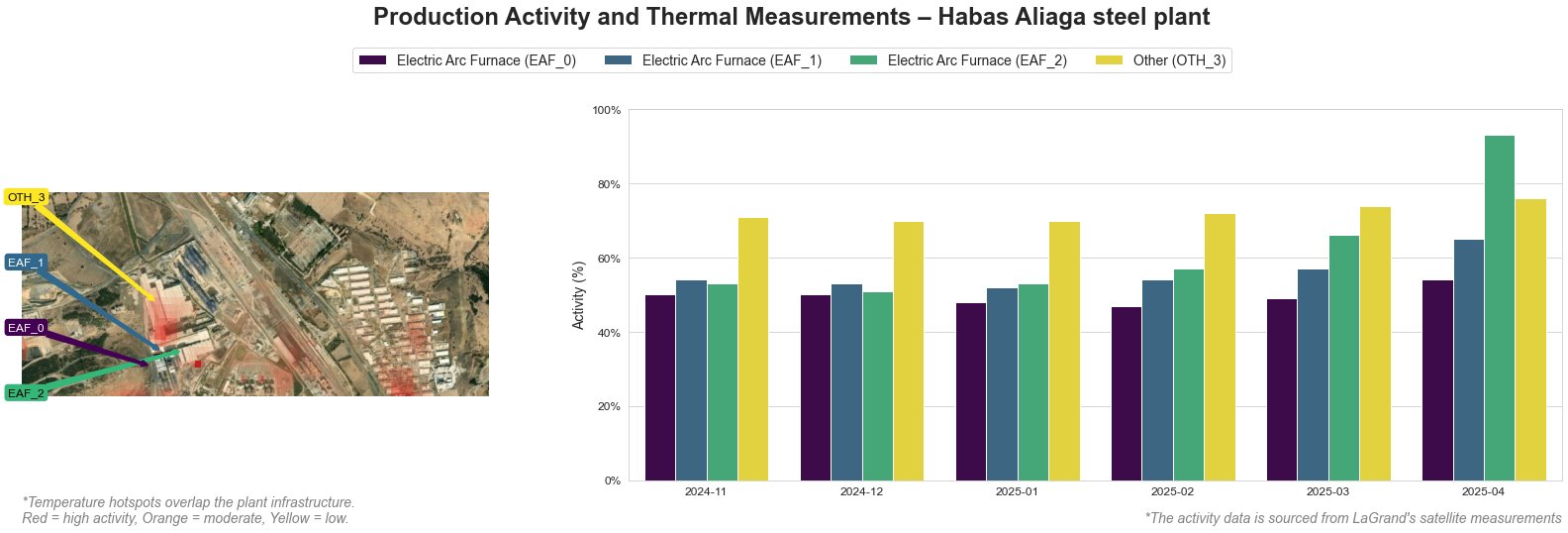
From the Field to the Dashboard – Built by Experts, for Experts.
Discover What's Really Happening in the Steel Industry
Use the AI-powered search engine to analyze production activity, market trends, and news faster than ever before.
Try the Free AI Search EngineActivity Surge at İzmir’s Steel Plant Signals Changes in Market Dynamics
The Habas Aliaga steel plant in İzmir, Türkiye, owned by Habas, has reported a significant uptick in activity levels, aligning with broader trends in the Turkish steel sector. With a production capacity of 4,500 tons of crude steel, the plant specializes in a variety of products including billets, slabs, and hot rolled coils, serving key sectors that drive national infrastructure and construction.
Recent satellite thermal activity data showcases a noticeable increase in operational levels, particularly among the Electric Arc Furnaces (EAFs). This comes during a period where Turkey’s steel production rose by 7% month-on-month in March 2025, highlighting a shift in operational dynamics across the industry, as reported in the article titled Turkey increased steel production by 7% m/m in March.
Detailed Activity Observations
Over the observed period, activity levels climbed steadily, culminating in a peak utilization of 93.0% for Electric Arc Furnace (EAF_2) by April 2025. This aligns with overall rising production trends in the region, despite some year-over-year declines highlighted in current market analyses.
Implications for Steel Buyers and Market Analysts
The upward trend in activity at the Habas Aliaga plant suggests a commitment to meet increasing demand within the domestic market. The noted increase in Turkish steel production offers steel buyers insights into potential supply security amidst rising global competition. Furthermore, as observed in Stockholding: German steel sales rise 5.6% in March as stocks fall, the dynamics around inventory and demand are shifting, potentially indicating price stability or upward pressure in the coming months.
For market analysts, the enhancement in plant activity could signal an opportunity to monitor supply chain changes which may lead to operational bottlenecks or necessitate adjustments in procurement strategies. Keeping a close eye on the operational metrics from the Habas Aliaga steel plant could provide crucial indicators of market trends as they unfold in 2025.


